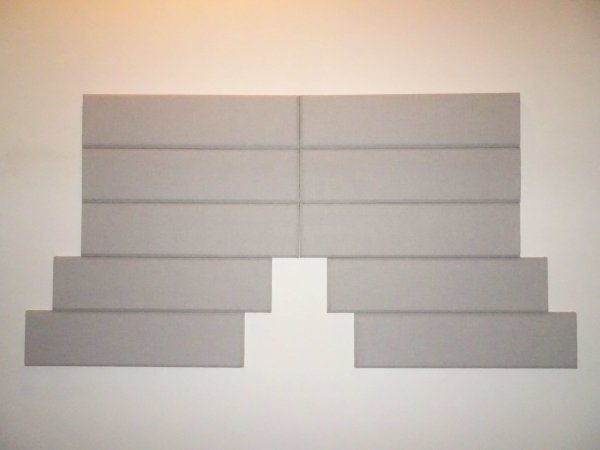A few days ago I experimented a bit more with speaker position. The basic set-up with toe-in is explained in post # 66, but I modified my listening position to be 6 inches out from an equilateral triangle with speakers 8.4 feet apart, with toe-in adjusted as described in post # 86.
I checked what would happen with speakers just a bit closer together. It has been described that the sound can gain fullness, and this is also what I heard in Peter A.'s system when he first got his Magico Q3 and then put them 5 inches closer together from where he had the speakers originally.
In this case I decreased the distance of the speakers from 8.4 to 8.1 feet, and kept the listening seat position the same. Toe-in was adjusted, with front and rear inner edge of speakers again lining up as viewed from the listener (c.f. post # 86).
Interestingly, the tonal balance hardly changed. And neither did the perceived soundstage width. What did occur, however, was a decrease in articulation with speakers closer together, which indirectly also lead to a perceived decrease of richness of timbre. Of course, I decided to stick with the original 8.4 foot distance between speakers (tweeter to tweeter).
Yet this shows once more that it's worthwhile experimenting. Had I had the speakers at an 8.1 foot distance from each other, an increase of the distance to 8.4 foot would have yielded a significant sonic improvement. Of course, each outcome is very much system and room dependent, thus can never be predicted. Each audiophile needs to experiment on their own.
I checked what would happen with speakers just a bit closer together. It has been described that the sound can gain fullness, and this is also what I heard in Peter A.'s system when he first got his Magico Q3 and then put them 5 inches closer together from where he had the speakers originally.
In this case I decreased the distance of the speakers from 8.4 to 8.1 feet, and kept the listening seat position the same. Toe-in was adjusted, with front and rear inner edge of speakers again lining up as viewed from the listener (c.f. post # 86).
Interestingly, the tonal balance hardly changed. And neither did the perceived soundstage width. What did occur, however, was a decrease in articulation with speakers closer together, which indirectly also lead to a perceived decrease of richness of timbre. Of course, I decided to stick with the original 8.4 foot distance between speakers (tweeter to tweeter).
Yet this shows once more that it's worthwhile experimenting. Had I had the speakers at an 8.1 foot distance from each other, an increase of the distance to 8.4 foot would have yielded a significant sonic improvement. Of course, each outcome is very much system and room dependent, thus can never be predicted. Each audiophile needs to experiment on their own.




